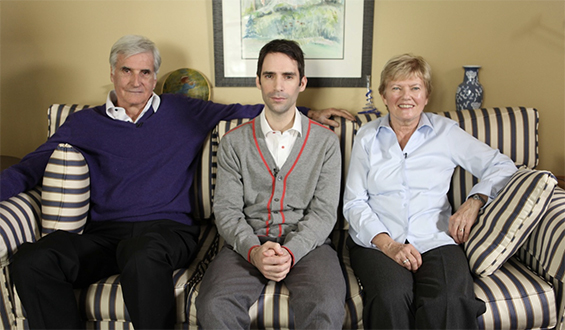by Suzanne Fields
EVERY GENERATION confronts its own obstacles. My parents eloped because they couldn’t afford to get married, and they hid the nuptials from their families for a year. They finally bought a big bed and moved it into the house of my father’s parents. They were grateful for a nice room, but Mom suffered the lack of independence, and she didn’t like having to help my grandmother in the kitchen with the kosher meals.
It was a hardscrabble time. My father clashed with his father, and soon my parents found a small apartment, and a male friend moved in to share the rent. They were all in their early 20s, and the arrangement was not unusual in Depression times.
But they celebrated their 60th wedding anniversary with their two children and six grandchildren, having lived comfortably in a big house of their own, bought when their children were young. They couldn’t have glimpsed their future in those early days of marriage, but the cultural values of the time, and the country’s growing economic prosperity, enabled them to live the American dream as first generation immigrants. They enjoyed a long marriage in a house they owned, their children got their diplomas and degrees and graduated with no debt. My father was obsessed with earning enough money to support his family; his sense of manhood depended on it.
That was a long time ago. The expectations of today’s generation growing into adulthood are quite different. Marriage is much delayed. Many single adults are “Boomerangs,” moving back with their parents after college. More surprising are the numbers of children who don’t leave home at all in their early 20s.
Fully 36 percent of the Millennial generation — young adults aged 18 to 31 — live at home, as measured by the Pew Research Center. In 2012 only 23 percent of that age group were married and living on their own, a sharp decline from yesteryear; in 1968, fully 56 percent were married and on their own. The reasons vary, but a poor economy is a big part of it. Many of these young adults attend college, running up debt, and can’t afford to live independently. In five years, marriage declined 5 percent among the Millennials, from 30 percent to 25 percent since 2007.
In a surprise, more young men than young women live with their parents, 40 percent compared to 32 percent. While Pew measures the trends through a combination of economic, educational and cultural factors, it doesn’t investigate the why or wherefore. That’s left for the literary investigators.
The oldest among the Millennials, those who have forged their lives for better or worse without marriage, are beginning to look back to grapple with their emotional perceptions, often through novels to see how others do it, observing how cultural changes affect the sexes in different ways. The emancipation of women flourishes among men as well as women, but the liberation distributes disappointment unequally. The passion my parents felt, that moved them to elope and that caused many members of their generation to marry and confront the obstacles of a conventional commitment, is often quickly dissipated today in casual sex. Nothing new there. But what seems to have caught women by surprise is how easy it is for men to slide into the older chauvinist attitudes they thought were gone with the feminine mystique.
The narcissism imbedded in the masculinity of chest-thumping, no matter how camouflaged by a designer shirt from a metrosexual thrift shop, has merely taken on new forms. The novelists characterizing the experiences of the Millennials demonstrate that feminism may have changed the message, but it didn’t strip away the old male privileges. “Boys will be ashamed of being boys,” observes literary critic Marc Tracy in The New Republic. “But they will be boys.”
With insight and wit, Adelle Waldman, age 36, captures the moment in her novel, “The Affairs of Nathaniel P.” Her male narrator, using his generation’s dating experiences, observes the acute injustice of current sexual mores. Prepare for the cringe when she describes the way women in their 30s take diminishing interest in their careers and seek a committed relationship just as the men lose interest in the diminishing sexual attraction of the “aging” female body in tight jeans and sleeveless dresses.
If, in this scenario, 30 is the new 20, it nevertheless suffers some of the emotional pain of the old 40s, as women confront the self-centered immaturity of their men. This generation finds itself stuck in drawing room comedy without the drawing room. Maybe Thomas Wolfe was right, you can’t go home again. But many Millennials do, and there’s the rub.


